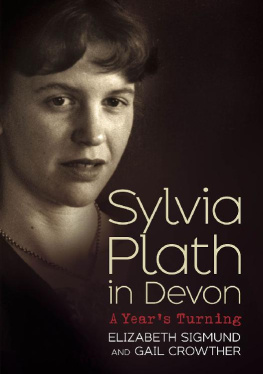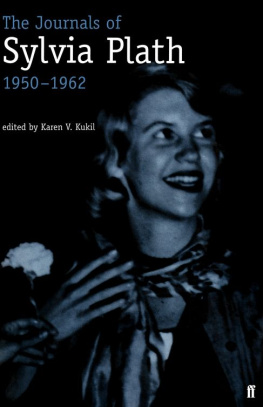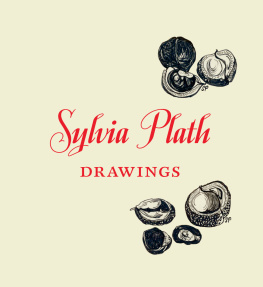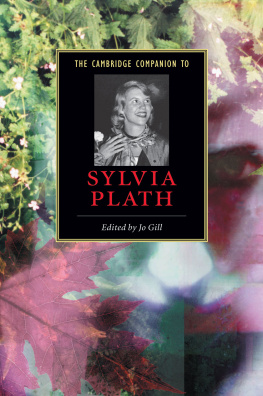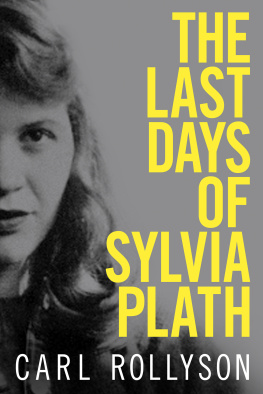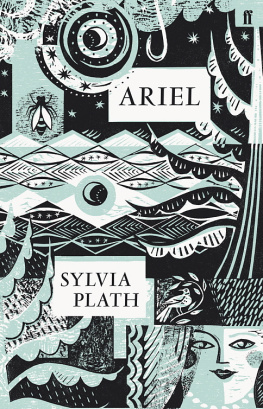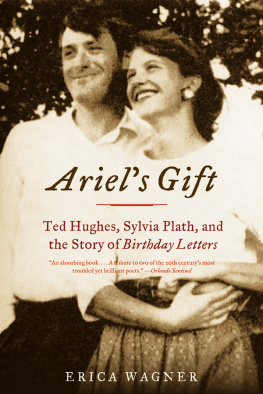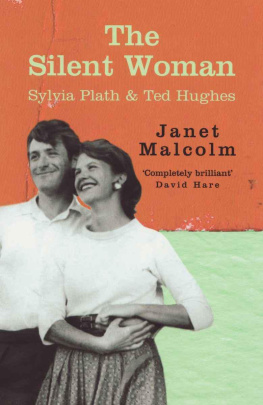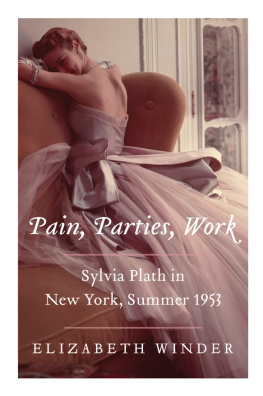
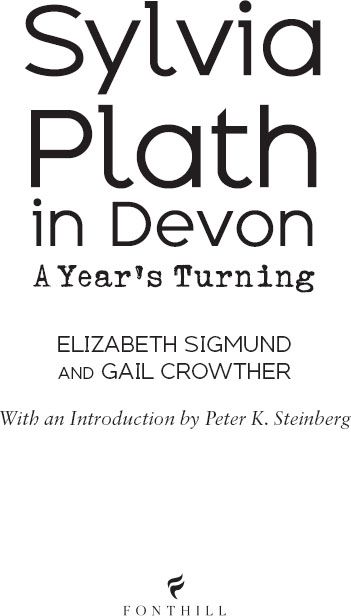
Fonthill Media Limited
Fonthill Media LLC
www.fonthillmedia.com
First published in the United Kingdom
and the United States of America 2014
British Library Cataloguing in Publication Data:
A catalogue record for this book is available from the British Library
Copyright Elizabeth Sigmund & Gail Crowther 2014
ISBN 978-1-78155-437-1
The right of Elizabeth Sigmund & Gail Crowther to be identified as the authors of this work has been
asserted by them in accordance with the Copyright, Designs and Patents Act 1988
All rights reserved. No part of this publication may be reproduced, stored in a retrieval system
or transmitted in any form or by any means, electronic, mechanical, photocopying, recording or
otherwise, without prior permission in writing from Fonthill Media Limited
Typeset in 11pt on 13pt Sabon
Printed and bound in England
O may my hearts truth
Still be sung
On this high hill in a years turning.
From Poem in October by Dylan Thomas
Contents
Acknowledgements
I would like to thank Ronald Hayman and my husband William for their practical help, Peter K. Steinberg for his advice and friendship, Fay Weldon, Al Alvarez, and Austin Wormleighton for their sympathetic support and encouragement, Gail Crowther, who has become a wonderful friend, and Sam Jordison, without whom this book may never have appeared.
Elizabeth Sigmund
I would like to thank Peter K. Steinberg for his friendship, his excellent scholarship, archival skills, sharing of letters, drafts and data, and for being my eyes in the Lilly Library. I would also like to thank Elizabeth and William Sigmund who have been a pleasure to work with, Karen V. Kukil and Barbara Blumenthal at The Mortimer Rare Book Room, Smith College, The Rare Manuscript Reading Room at The British Library, Carl Rollyson, Vanessa Lindgren, Carolyn King, Andrew Leverton Tony Cockayne, David Fitzwilliam, Carol and Ces Crowther, Joanne and Peter Whiteside, Rob Sanders, Nicola Ashton, Jasper Hadman at Fonthill Media, and finally, my constant research and writing companion, George.
Gail Crowther
Introduction
Writing Life
Peter K. Steinberg
In Sylvia Plath in Devon: A Years Turning, Elizabeth Sigmund and Gail Crowther explore Sigmunds friendship with Plath and how Plaths life in Devon influenced her work between September 1961 and December 1962. In addition to Sigmunds personal memories, the authors call on material from traditional archives and the living archive to bring Plaths life and writing into sharp, clear focus, almost erasing the fact that she died more than fifty years ago.
For years, critics have called for a separation of Plaths creative writing and her popular image as a depressive figure. But Plaths life is central to her writing: she herself said that her poetry comes out of the sensuous and emotional experiences and that personal experience is very important (Orr, 1966: 169).
The subjects that Plath wrote about in North Tawton, the small town in Devon where she lived briefly, range widely. They include, among others, beekeeping, Thalidomide, yew trees, the experience of childbirth, the delirium caused by high fevers, a cut thumb, marital relations, poppies, and horseback riding. While each of these topics, and more, were informed by her personal experiences, Plath shapes them to have universal interest. Cut, for example, deals with the near amputation of her own thumb, but brings in historic themes such as the colonization of North America and the Revolutionary War against Great Britain. And further layers to this poem are revealed upon reading Plaths letters. On 9 November 1961, Plath wrote to her mother that she had ordered a carpet sample coloured turkey-red (this detail was removed when the letter appeared in Letters Home in 1988) for her study in Court Green, her house in North Tawton. Choosing such a bold, strong colour for her study proved comforting and inspirational to her, and the colour red appears frequently in her poetry. In Cut, the knowledge of these biographical particulars gives a deeper significance to the image, Your turkey wattle / Carpet rolls / Straight from the heart (Plath, 1982: 235).
Shutting the door on Plaths life and the way it informed her writing flies in the face of her own stated beliefs. Her journals record dozens of instructionscredos, if you willabout her writing and the drawing of material from her life. Plath brought these credos into public view in her October 1962 interview with Peter Orr, when she related that personal experience is very important to her. But she was not only concerned about herself. She commented in a 1962 London Magazine essay entitled Context that the real issues of her time are the issues of every timethe hurt and wonder of loving; making in all its formschildren, loaves of bread, paintings, buildings; and the conservation of life of all people in all places (Plath, 1962: 46). Plath saw both her position as a writer and the role of poetry in the world clearly. She expertly translated these experiences, emotions, and themes into a language that is still relevant today. This is how our generation is able to understand them. Her poetry and prose has the power to transcend its personal genesis, and apply to the issues of every time and still be relevant to the larger things, the bigger things (Orr, 1966: 170).
In Sylvia Plath in Devon: A Years Turning, Elizabeth Sigmund, an intimate friend of Plaths, recalls her unique, personal memories of their friendship. In addition to these memories, she and her co-author, Gail Crowther, allow Plath to define herself through her own correspondence, poetry, and personal papers, while adding context to Plaths life in North Tawton and the southwest of England. The result is an intimate account of this crucial period in the poets life, which enriches both aspects of her legacy: her writing and her life.
Sigmund draws on her personal memories of her friend with care and love. Given their very different backgrounds and upbringings in England and the United States, some might find it remarkable that a deep bond was immediately established between them upon their meeting in the spring of 1962. It was the start of a period of renewed activity for Plath, following the birth of her second child, in which she would write some of her most memorable poetry. She took great notice of her surroundings and kept detailed dossier notes on her North Tawton neighbours; Elizabeth Sigmund seems to have escaped this level of documentation, which I think suggests how close she was to her new friend.
Coincidences abound with Sylvia Plath. In recollecting her own past, Sigmund reveals how unknowingly connected she and Plath were, and how, in trying to keep Plaths memory alive and fresh, she made remarkable discoveries that link them closer together. Plath built solid friendships with a small, diverse group of women and the evidence strongly suggests that had she not died, Plath and Sigmund would both have been politically and socially committed women.
Sylvia Plaths time in Devon was bookended by the promise of bright, sunny days. This book illustrates the hopes Plath had when moving from Londona city in which she thrived culturally and professionallyto the countryside in Devon, where she fully entrenched herself in making a comfortable, sustaining home. Much happened in that time that previous biographical coverage has either ignored or failed to recognize as important, or to which there has been limited access or knowledge of materials. But even so, her time in Devon has come under close scrutiny in biographies, and without a doubt, 1962 is one of the most important years in Plaths life. The poetry she wrote, particularly towards the end of her days in North Tawton in October 1962, is of legendary importance to twentieth-century literature. Sigmunds personal exploration of her life and creative writing in this period is remarkable given the lack of crucial primary source material, such as her final journals, letters, and novel(s).
Next page
